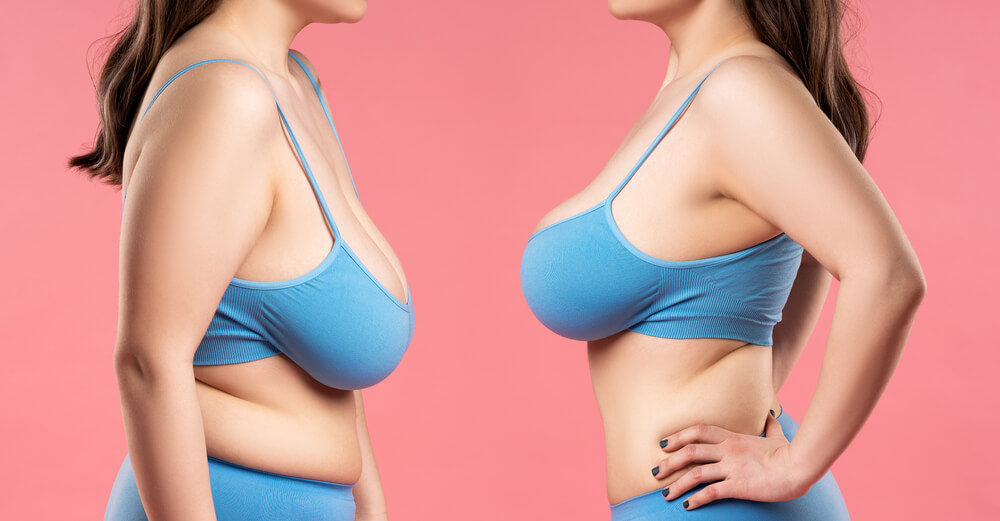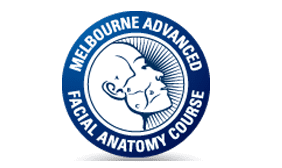Discovering How To Lift Breast After Weight Loss is essential for many who have achieved significant weight loss, as it often results in breasts appearing deflated and saggy. This transformation, while a testament to your hard work, can affect the appearance of your breasts. Fortunately, there are effective strategies you can employ to address this change. This article delves into 10 tips designed to rejuvenate and lift your breasts post-weight loss, helping you embrace your new body with confidence and satisfaction.
What Causes Breasts To Sag After Weight Loss?
Breasts sag after weight loss because the ligaments that support the breast and the breast skin have a limited ability to retract as the fatty element of the breast loses volume. This effect can be compounded by genetic variance in skin elasticity and natural collagen levels. Research suggests that a person with a body mass index (BMI) over 30 could be more at risk of complications from breast reduction surgery. A 2010 study suggests that breast reduction may act as an incentive to continue with weight loss after surgery. For some women, gaining or losing 20 pounds will make them go up or down a cup size. This results in breast sagging. Specific causes include:
- Loss of breast volume – Breasts are composed primarily of fat tissue. Losing weight reduces overall body fat, which shrinks breast size. With less tissue to support, breasts sag.
- Changes to breast skin – Skin can only stretch so far. Rapid weight loss leaves excess and loose skin with less elasticity to reshape the breasts.
- Effects of ageing – Skin elasticity naturally decreases as women age while breast tissue loses glandular fat and collagen. This makes breast sag more noticeable.
- Gravity – The heavier breasts are, the more gravity’s pull impacts them. Deflated breasts after weight loss are still subject to downward sagging.
- Hormonal impacts – Post-pregnancy oestrogen drops, menopause, and some weight loss methods can influence hormone levels that promote breast sag.
In summary, rapid weight loss leaves breasts deflated and unsupported with poorly elastic, overstretched skin accentuating breast sag.
10 Tips To Rejuvenate Breasts
Sagging, deflated breasts can happen for many reasons, from weight loss to pregnancy to ageing. Fortunately, there are many ways to lift, firm and rejuvenate your breasts for a more youthful appearance. Useful techniques include:
Book A Consultation With Dr Tarek Bayazid
Top-rated Plastic Surgeon For Breast Lift in Dubai
1. Wear Supportive Bras
Wearing supportive bras is key for lifting breasts after weight loss. Look for bras with wide straps, moulded cups, and solid band support. Underwire bras can also help lift breasts by improving shape and projection. Compression sports bras during activity can prevent excess movement.
2. Do Chest Exercises
Strengthening the chest muscles can give a lifting effect. Good options include:
- Pushups
- Chest presses
- Pec fly machine
Aim for 8-12 reps of each exercise 2-3 times weekly to tone the chest area. Proper form is important to prevent injury.
3. Use Skin Products With Peptides
Look for skin care products containing peptides like Argirelene or Matrixyl 3000. When applied topically, these peptides can help stimulate collagen production to improve skin elasticity and firmness. Focus application on the breast area.
4. Try Radiofrequency Treatments
Radiofrequency energy heats the deeper layers of skin to encourage new collagen and elastin. Several sessions may be needed, but it can tighten and lift breast skin. Ultrasound and laser treatments can also be practical in the suitable candidates.
5. Use Cold Therapy
Cold therapy constricts blood vessels to decrease inflammation and swelling around breast tissue. Use cooling gel packs, ice packs, or cold compresses for 10-15 minutes a few times daily to help tighten the skin.
6. Massage With Plant Oils
Massaging the skin improves circulation and can have a tightening effect. Use natural plant oils like coconut, almond, olive, or jojoba oil to massage the skin in circular motions for 5-10 minutes daily.
7. Stay Hydrated
Drink plenty of water to keep your skin its most supple and elastic. Dehydrated skin is more prone to sagging. Aim for at least 64 ounces of water daily for skin health. Reduce alcohol and caffeine, which can dehydrate.
8. Apply Adhesive Bras
For a quick fix, adhesive bras can provide a subtle lift while wearing low-cut tops or dresses. Reusable silicone bras stick to the skin to provide coverage and cleavage enhancement. Follow product instructions closely for best results, and always check your skin for irritation.
9. Consider Breast Fillers
Injectable fillers like hyaluronic acid can add volume back to deflated breasts. Results are temporary, lasting 6-12 months on average before requiring repeat injections. This non-surgical approach needs more downtime. Discuss options with a cosmetic provider.
10. Get Breast Lift Surgery
For significant sagging, a breast lift surgically removes excess skin and reshapes breasts. An implant can also be inserted for improved fullness. Though invasive, a breast lift typically produces longer-lasting, dramatic outcomes. Talk to a board-certified plastic surgeon about surgical planning.
What are the best treatments for sagging and deflated breasts?
Sagging and deflated breasts can be lifted, filled out, and reshaped with plastic surgery procedures to create a rejuvenated, youthful breast appearance. The best surgical options include:
- Breast lift (mastopexy) – Excess skin is removed, and the remaining tissue is surgically tightened. Lifts and firms the breasts.
- Breast augmentation – Breast implants are added to increase breast size and improve shape/projection. Helps fill out loose skin.
- Breast reduction – Removes excess breast tissue if breasts enlarge. It can reduce sag while making breasts smaller.
- Breast lift with implants – A combination procedure lifts breast tissue, removes skin, and adds implants for comprehensive reshaping.
- Fat transfer breast augmentation – Uses liposuctioned fat injected into the breasts to restore volume and fullness. Enhances size without implants.
The proper procedure depends on factors like the degree of sagging, skin quality, amount of deflation, and desired breast size. During an initial consultation, a board-certified plastic surgeon can evaluate your breasts and develop an appropriate surgical plan to correct sagging.
Non-surgical options
While surgical breast lifts produce dramatic, longer-lasting results, some patients may opt to try non-invasive treatments first before considering going under the knife. Non-surgical options can provide moderate improvements in breast shape and firmness when used consistently over time.
Here is an overview of the most popular non-surgical techniques:
| Method | Description | Benefits | Considerations |
| Breast Lift Tape/Adhesive Bras | Tape or adhesive bras that lift and support breasts | Temporary lift; reusable; no surgery | Needs regular reapplication; minimal long-term effects |
| Breast Filler Injections | Injectable fillers like hyaluronic acid add volume | Non-surgical; quick treatment; minimal downtime | Temporary results; repeat injections likely needed |
| Laser/Radiofrequency Treatments | Energy-based skin tightening treatments | Non-invasive; stimulates collagen; no surgery | Mild improvement; multiple treatments required; not dramatic |
In summary:
- Breast lift tapes and adhesive bras provide a temporary lift but need to be reapplied regularly
- Dermal fillers injected into the breasts offer non-surgical volume enhancement, but the effects are temporary
- Laser and radiofrequency treatments can mildly improve skin tone but cannot dramatically lift breast tissue without surgery.
When weighing options, discuss with your provider to get their guidance on what non-surgical approach may be best to achieve your goals.
Adhering to these strategies can aid in lifting, firming, and defining the breasts after weight loss, a process pivotal in understanding how to raise breasts after weight loss. It’s important to remain patient, as reshaping the breast naturally takes time. If, however, the sagging remains unaddressed by these measures, exploring surgical interventions could offer a more definitive solution.
For personalised guidance and to explore the most suitable breast lift options for your needs, book a consultation with Dr Tarek Bayazid, a renowned Plastic Surgeon in Dubai.








Related Posts